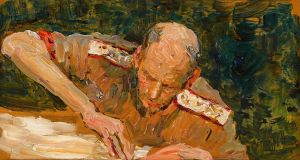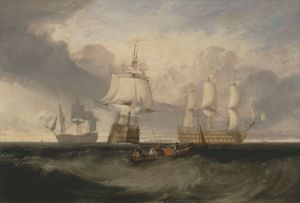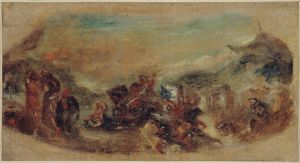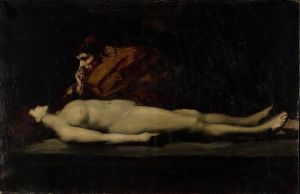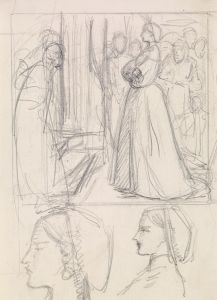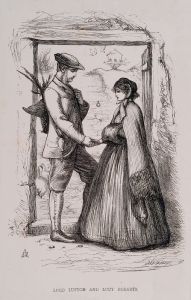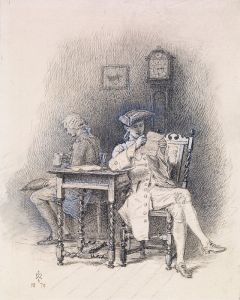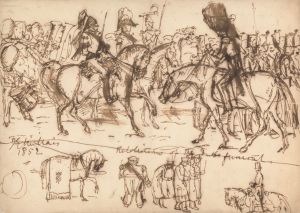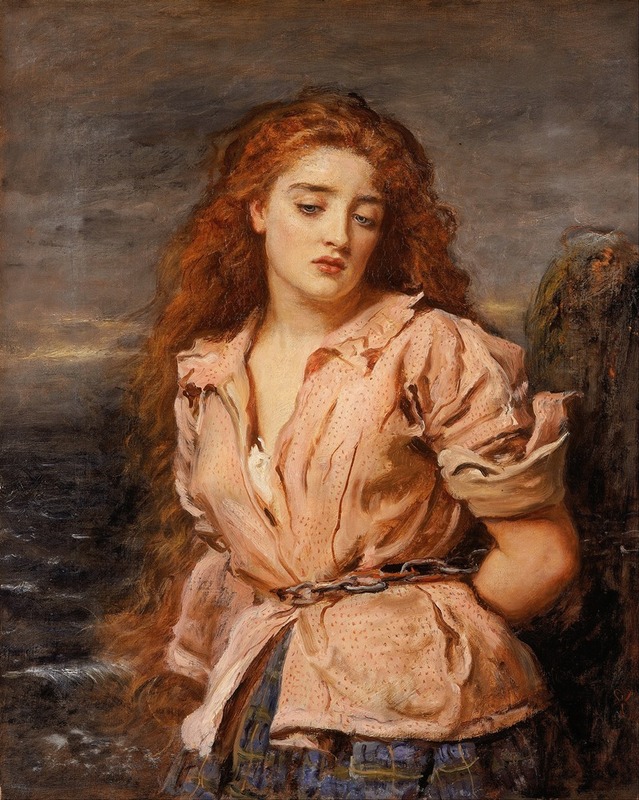
The Martyr of the Solway
A hand-painted replica of Sir John Everett Millais’s masterpiece The Martyr of the Solway, meticulously crafted by professional artists to capture the true essence of the original. Each piece is created with museum-quality canvas and rare mineral pigments, carefully painted by experienced artists with delicate brushstrokes and rich, layered colors to perfectly recreate the texture of the original artwork. Unlike machine-printed reproductions, this hand-painted version brings the painting to life, infused with the artist’s emotions and skill in every stroke. Whether for personal collection or home decoration, it instantly elevates the artistic atmosphere of any space.
"The Martyr of the Solway" is a painting created in 1871 by Sir John Everett Millais, a prominent British artist and one of the founding members of the Pre-Raphaelite Brotherhood. The artwork depicts a historical and religious subject, inspired by the story of Margaret Wilson, a young Scottish Covenanter who was executed in 1685 during the period known as "The Killing Time." This era was marked by the persecution of Covenanters, a group of Scottish Presbyterians who opposed the interference of the monarchy in church affairs.
Margaret Wilson, along with another woman named Margaret McLachlan, was sentenced to death by drowning for refusing to renounce her faith and swear allegiance to the authority of the king over the church. The execution took place in the Solway Firth, a coastal area in southwest Scotland. The women were tied to stakes in the rising tide, a method intended to force them to recant their beliefs as the water approached. Margaret Wilson, reportedly only 18 years old at the time, is remembered as a martyr for her steadfastness.
Millais' painting captures the solemn and tragic nature of this event. The composition focuses on a lone female figure, symbolizing Margaret Wilson, standing resolutely in the water. The surrounding landscape, with its muted tones and dramatic lighting, emphasizes the isolation and gravity of the scene. The artist's attention to detail and emotional depth reflects the influence of the Pre-Raphaelite movement, which sought to combine realism with a heightened sense of spirituality and moral significance.
The painting was well-received during its time and remains an important example of Millais' later work, which often moved away from the highly detailed style of his earlier Pre-Raphaelite period. Instead, "The Martyr of the Solway" demonstrates a more mature and restrained approach, focusing on the emotional resonance of the subject matter.
Today, the painting is recognized as a significant historical and artistic representation of religious persecution and martyrdom. It serves as a reminder of the struggles faced by individuals who stood firm in their beliefs despite the threat of death. The artwork is part of the collection of the Walker Art Gallery in Liverpool, England, where it continues to be appreciated for its historical and artistic value.






